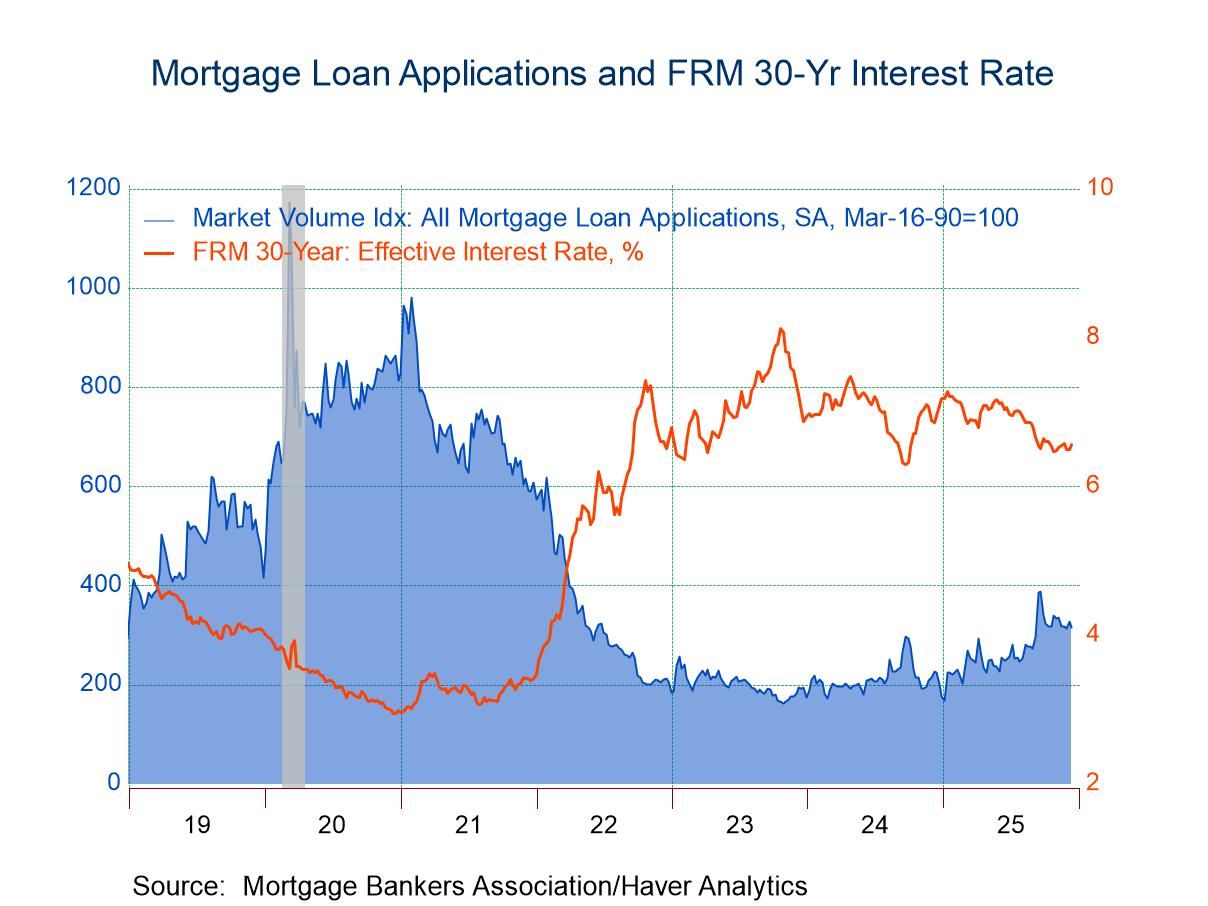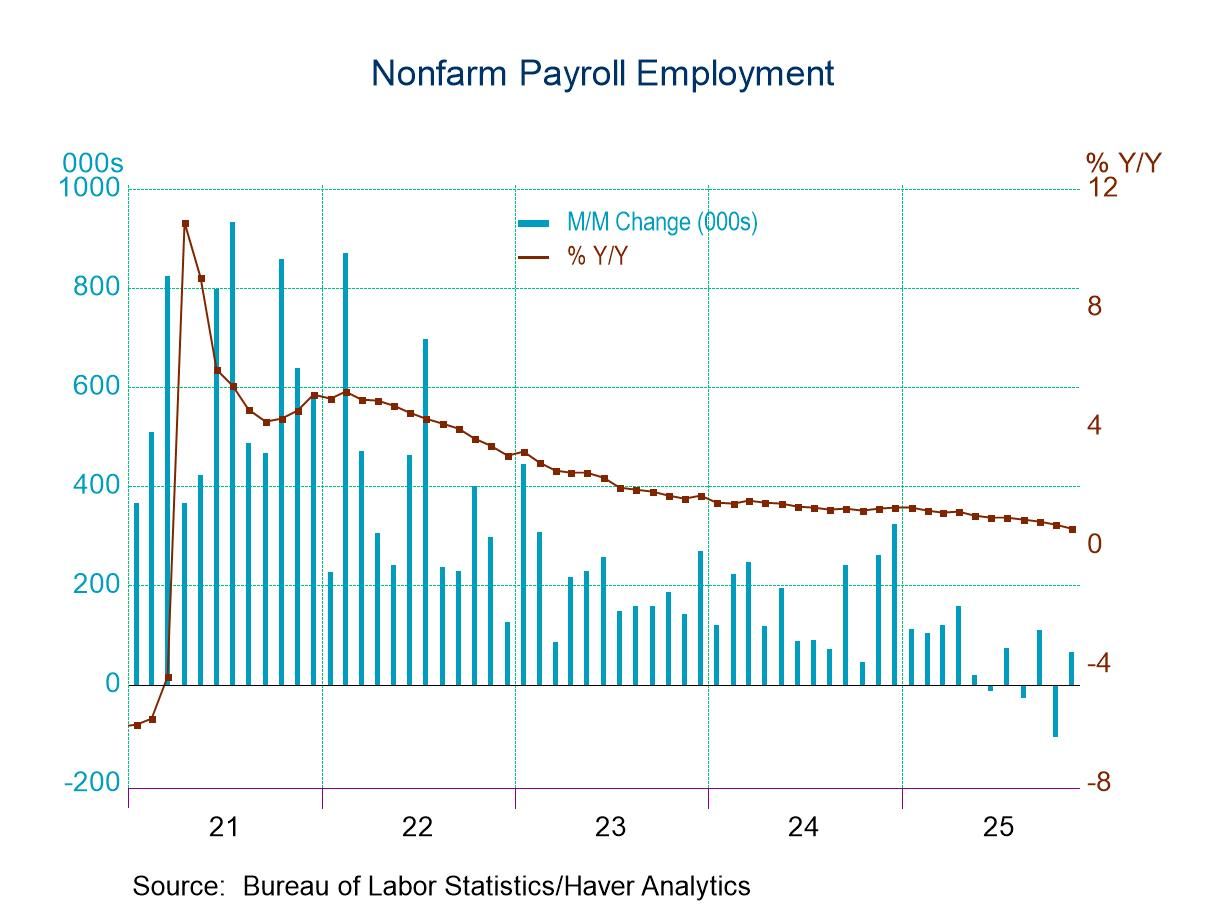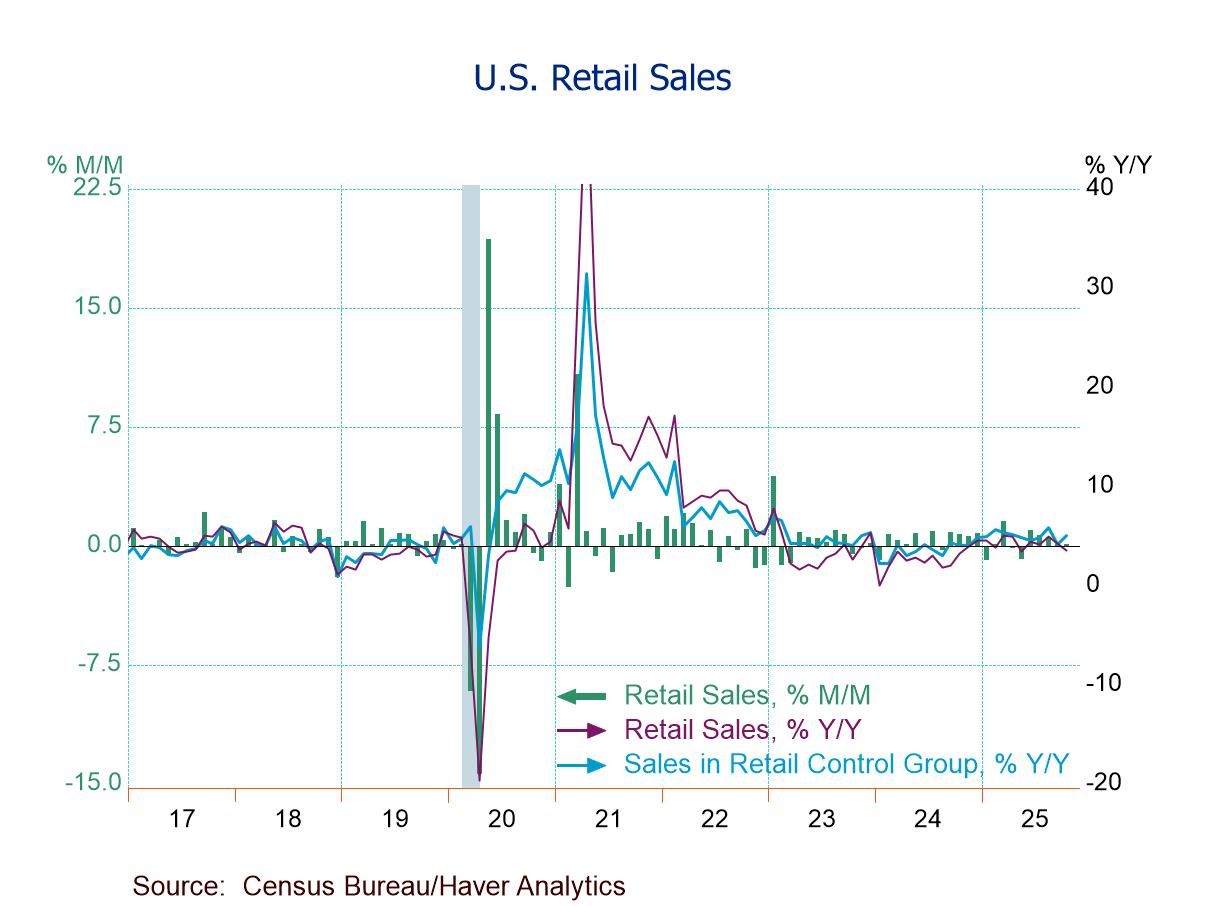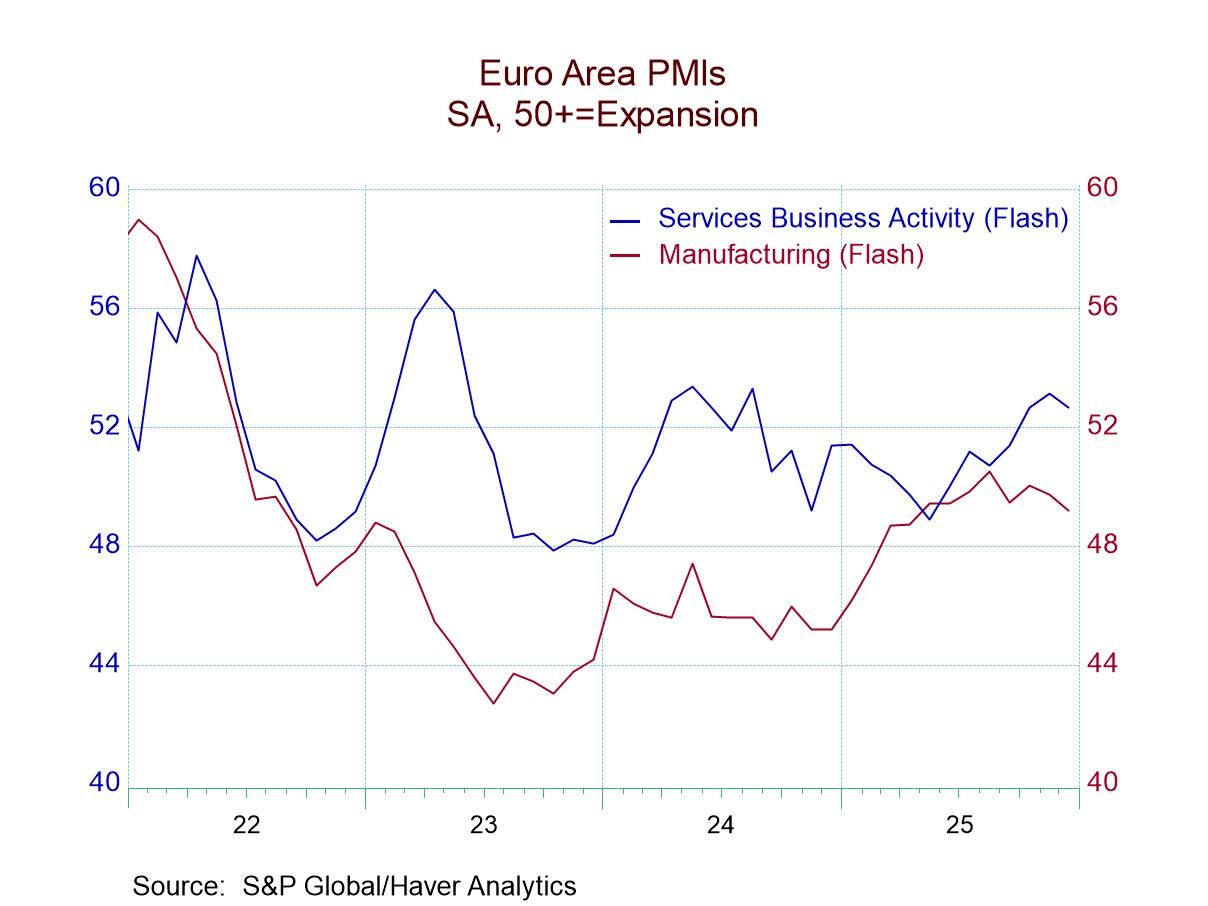 Global| Feb 02 2009
Global| Feb 02 2009U.S. Construction Spending Fell For Second Year
by:Tom Moeller
|in:Economy in Brief
Summary
The value of construction put in place during December dropped another 1.4%. The decline followed a 1.2% November drop which was double the decline originally estimated. These declines pulled overall construction down 5.2% for the [...]
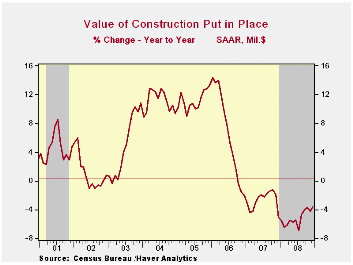
The value of construction put in place during December dropped another 1.4%. The decline followed a 1.2% November drop which was double the decline originally estimated. These declines pulled overall construction down 5.2% for the full year 2008 which was the weakest performance since 1991. It followed a 2.7% decline during 2007. Last month's decline about matched Consensus expectations.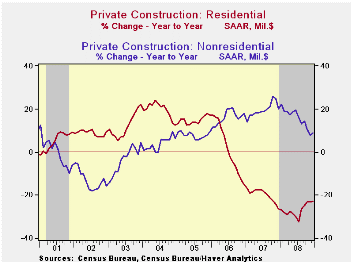
Residential building activity led the latest monthly decline with a 3.2% drop which pulled 2008 activity off by roughly one-quarter from the full year from 2007. That was a record decline for the series which extends back to 1965. Single-family construction activity fell 8.1% last month after a 6.1% November drop. It pulled the full-year level down 39.0% after a 26.8% drop during 2007. Building activity on multi-family units also fell hard. The 3.2% December decline lowered activity by 8.5% for the full year, about the same as the 2007 drop. Spending on improvements, however, recouped a 2.0% November fall but still ended the year posting a 7.2% decline.
During the last twenty years there has been an 84% correlation between the q/q change in the value of residential building and its contribution to growth in real GDP.
The value of nonresidential building activity has remained firm relative to the residential sector. Though the 0.4% December slip was the fifth in the last six months, activity rose 15.3% for the full year or about the same as during 2007. Spending on office construction rose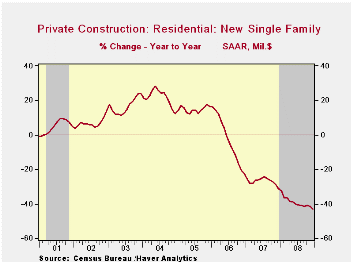 8.3% for the year, but that was roughly half the growth during the prior three years. Building in the multi-retail sector, however, fell 3.8% for the year after a 17.0% gain during 2007 and a 28.3% surge during 2006. Spending on health care facilities rose 8.1% for the year, about as it has since 2003. Building activity of educational facilities rose 10.2% last year after a 22.9% 2007 gain
8.3% for the year, but that was roughly half the growth during the prior three years. Building in the multi-retail sector, however, fell 3.8% for the year after a 17.0% gain during 2007 and a 28.3% surge during 2006. Spending on health care facilities rose 8.1% for the year, about as it has since 2003. Building activity of educational facilities rose 10.2% last year after a 22.9% 2007 gain
Public construction fell 0.8% in December. But for the year activity rose a firm 7.1% after a 12.3% 2007 rise. Office building led the gain with 30.8% rise for the full year while the value of spending on educational facilities rose 7.8%. Spending on highways & streets rose 5.1% the full year, about as it did in 2007. The value of construction on highways & streets is roughly one-third of the value of total public construction spending.
The more detailed categories of construction represent the Census Bureau’s reclassification of construction activity into end-use groups. Finer detail is available for many of the categories; for instance, commercial construction is shown for automotive dealers and parking facilities, drugstores, building supply stores, and both commercial warehouses and mini-storage facilities. Note that start dates vary for some seasonally adjusted line items in 2000 and 2002, and that constant-dollar data are no longer computed.
| Construction (%) | December | November | Y/Y | 2008 | 2007 | 2006 |
|---|---|---|---|---|---|---|
| Total | -1.4 | -1.2 | -3.6 | -5.2 | -2.7 | 6.3 |
| Private | -1.7 | -2.3 | -7.6 | -9.3 | -6.9 | 5.5 |
| Residential | -3.2 | -4.1 | -22.9 | -27.1 | -19.8 | 1.0 |
| Nonresidential | -0.4 | -0.8 | 8.9 | 15.3 | 19.6 | 16.2 |
| Public | -0.8 | 1.2 | 7.0 | 7.1 | 12.3 | 9.3 |
Tom Moeller
AuthorMore in Author Profile »Prior to joining Haver Analytics in 2000, Mr. Moeller worked as the Economist at Chancellor Capital Management from 1985 to 1999. There, he developed comprehensive economic forecasts and interpreted economic data for equity and fixed income portfolio managers. Also at Chancellor, Mr. Moeller worked as an equity analyst and was responsible for researching and rating companies in the economically sensitive automobile and housing industries for investment in Chancellor’s equity portfolio. Prior to joining Chancellor, Mr. Moeller was an Economist at Citibank from 1979 to 1984. He also analyzed pricing behavior in the metals industry for the Council on Wage and Price Stability in Washington, D.C. In 1999, Mr. Moeller received the award for most accurate forecast from the Forecasters' Club of New York. From 1990 to 1992 he was President of the New York Association for Business Economists. Mr. Moeller earned an M.B.A. in Finance from Fordham University, where he graduated in 1987. He holds a Bachelor of Arts in Economics from George Washington University.



